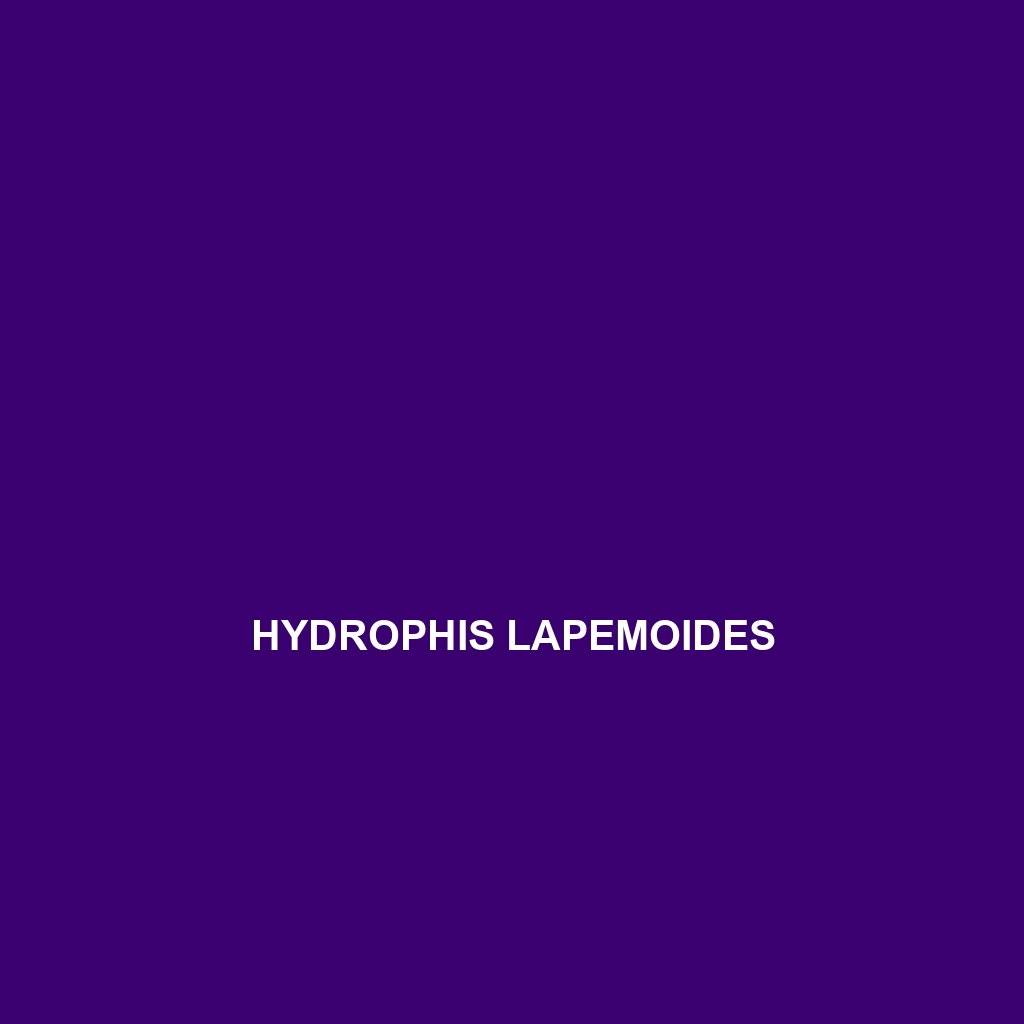Common Name
Hydrophis lapemoides
Scientific Name
Hydrophis lapemoides
Habitat
Hydrophis lapemoides, commonly known as the black-banded sea snake, primarily inhabits warm coastal waters of the Indo-Pacific region. This species is frequently found in marine habitats, particularly near coral reefs, shallow lagoons, and estuaries. The waters are typically characterized by a tropical climate, with temperatures extending between 22°C to 30°C (72°F to 86°F). Its range includes countries like Australia, Indonesia, and the Philippines, primarily thriving in regions with abundant marine life and sandy substrates, where it can effectively hunt for its food.
Physical Characteristics
Hydrophis lapemoides is distinguished by its elongated body, which can reach lengths of up to 1.5 meters (approximately 5 feet). The coloration is primarily olive-green or gray with distinctive black bands across its body, which serve as camouflage among the ocean’s surroundings. Its flattened tails aid in swimming, adapting it perfectly to its aquatic lifestyle. Additionally, this species is equipped with minute, rear-facing teeth that enable it to grasp slippery prey, making them a formidable predator in their environment.
Behavior
This species exhibits both diurnal and nocturnal behavior, allowing it to adapt to various ecological niches. Hydrophis lapemoides is usually solitary but may be seen in pairs during mating rituals. This species is known for its excellent swimming abilities and often remains submerged for extended periods while hunting or evading predators. They are typically non-aggressive and display a unique defensive behavior by flattening their bodies, which allows them to avoid confrontation and blend into their surroundings. Their social interactions are largely influenced by environmental factors and food availability, leading to migratory patterns that correspond to changes in prey abundance.
Diet
Hydrophis lapemoides is primarily a carnivore, feeding on small fish and eels found in its marine habitat. It employs a hunting strategy characterized by ambush tactics, where the snake blends into the surroundings and waits for its prey to swim by. The species also displays opportunistic feeding behavior, consuming whatever prey becomes available, which may include crustaceans or small invertebrates. Their diet plays a crucial role in maintaining the ecological balance in their habitats, as they help regulate fish populations and act as both predator and prey in the food web.
Reproduction
This sea snake is ovoviviparous, meaning that it gives birth to live young rather than laying eggs. Mating typically occurs during the warmer months, and females can give birth to between 5 to 10 live offspring at a time. The gestation period lasts approximately six months, after which the young snakes emerge fully formed and are immediately independent. Parental interactions post-birth are minimal; however, the presence of the mother can serve as a protective factor against potential predators in the immediate vicinity.
Conservation Status
The conservation status of Hydrophis lapemoides is currently classified as Least Concern according to the IUCN Red List. This classification indicates that, while the species does face threats from habitat degradation, pollution, and incidental capture in fishing nets, population levels remain stable. However, conservation efforts are essential to maintain its habitat and mitigate human impacts, particularly in coastal areas where urban development and pollution are on the rise.
Interesting Facts
Beneath its striking appearance, Hydrophis lapemoides possesses a unique adaptation that allows it to survive in marine environments despite being related to terrestrial snakes. It has developed specialized glands that help eliminate excess salt from its body, enabling it to thrive in saline waters. Moreover, this species has a highly potent venom that enables it to immobilize prey quickly; however, it is generally not considered a threat to humans unless provoked.
Role in Ecosystem
Hydrophis lapemoides plays a crucial role in its marine ecosystem as a predator, regulating populations of smaller fish and acting as a vital component in the food web. As both predator and prey, it contributes to the energy transfer within its habitat. Additionally, its presence indicates a healthy marine environment, as the species thrives in waters with abundant biodiversity. The black-banded sea snake’s interactions with other marine species also help in maintaining the delicate balance within coral reef ecosystems, showcasing its significance in promoting biodiversity and ecological health.
